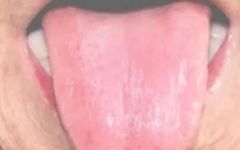Tongue diagnosis is a crucial aspect of Traditional Chinese Medicine (TCM), serving as a simple and effective method for diagnosis and differentiation by observing the color and shape changes of the tongue.
During tongue diagnosis, observations are made in the order of tip of the tongue – middle of the tongue – root of the tongue – sides of the tongue. The tongue body is examined first, followed by the tongue coating, for about 30 seconds. If the initial observation is unclear, the patient should rest for 3-5 minutes before re-examination.
Below are some commonly encountered tongue coating characteristics compiled by the editor, which we hope will be helpful.
1. Pale Desquamated Coating
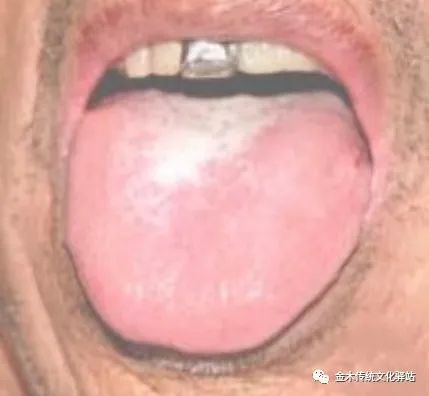
Characteristics: The tongue is pale and tender, with desquamated coating.
Clinical Significance: Indicates deficiency of stomach qi and deficiency of both qi and blood.
2. Red Desquamated Coating
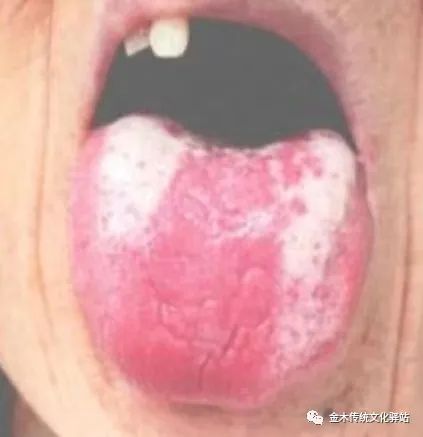
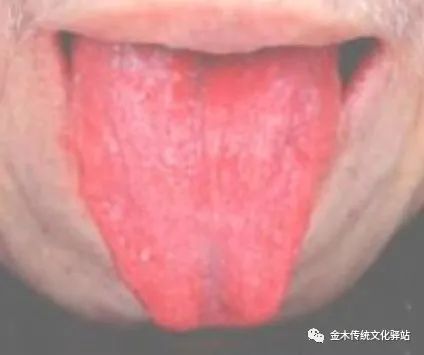
Characteristics: The tongue is red and the coating is desquamated.
Clinical Significance: Indicates deficiency of stomach yin, excess of yin deficiency heat, and deficiency of both qi and yin.
3. Patchy Desquamated Coating
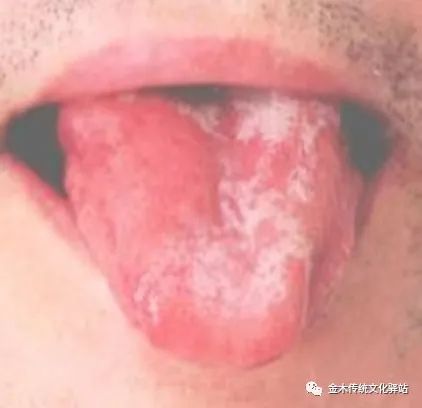
Characteristics: The coating is patchy with areas of desquamation, while the remaining areas have greasy or white coating.
Clinical Significance: Indicates deficiency of stomach qi, with dampness and turbidity not resolved, indicating a more complex condition.
4. Similar Desquamated Coating
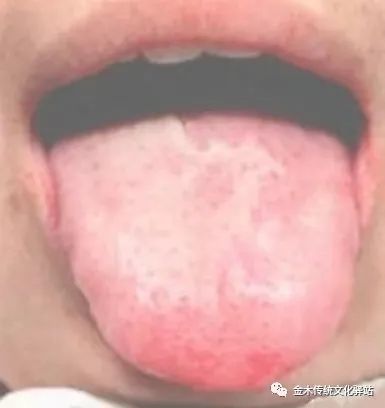
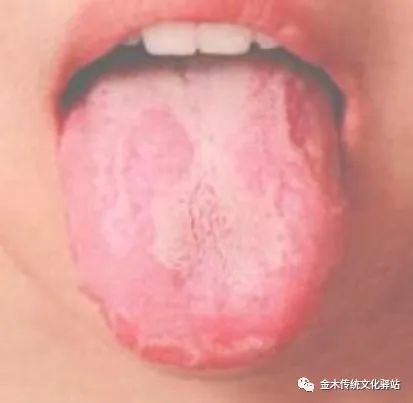
Characteristics: The areas of desquamation on the tongue surface are not smooth, with new coating particles or papillae visible.
Clinical Significance: Indicates deficiency of both stomach qi and stomach yin, with weakened digestive function, also seen in individuals with allergic constitution.
5. Geographic Tongue
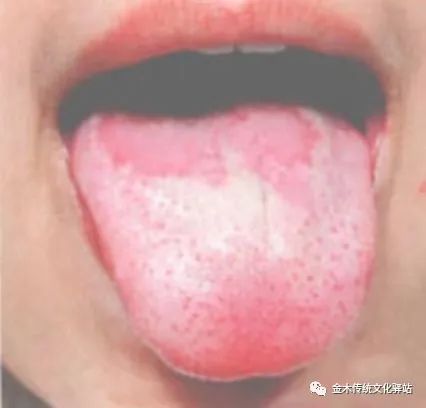
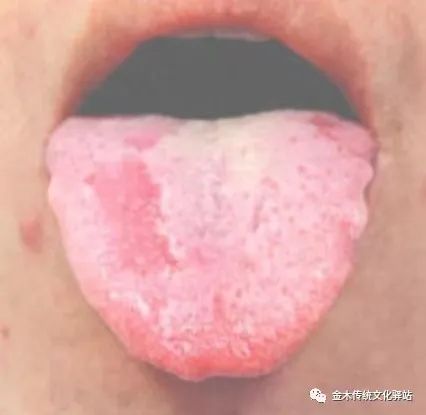
Characteristics: The coating is desquamated in patches, with raised edges and clear boundaries, and the areas of desquamation frequently change.
Clinical Significance: Commonly seen in individuals with deficiency of both qi and yin or those with allergic constitution.
6. Mirror Red Tongue
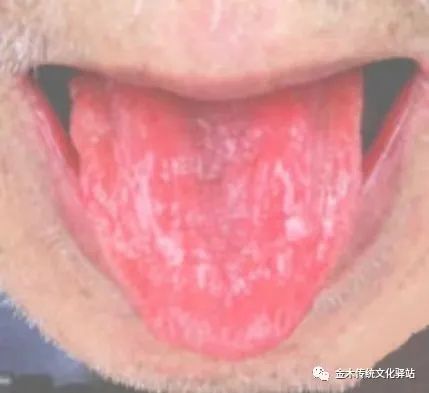
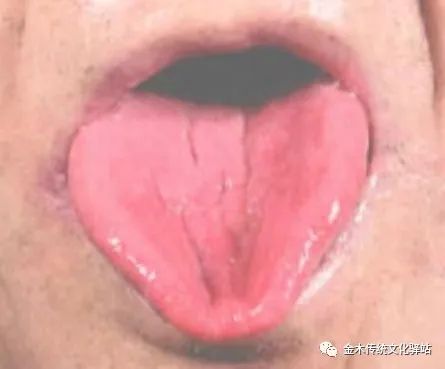
Characteristics: The coating is completely desquamated, and the tongue body is red.
Clinical Significance: Indicates dryness of stomach yin and lack of generating qi in the stomach.
7. Mirror Pale Tongue
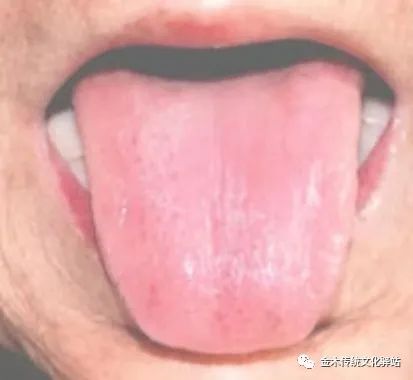
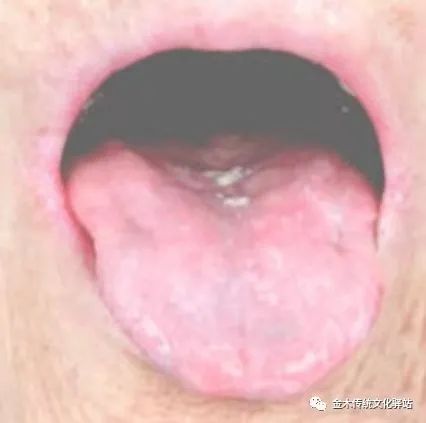
Characteristics: The tongue is pale white, with a mirror-like desquamated coating.
Clinical Significance: Indicates severe deficiency of both qi and blood, with impending loss of stomach qi, and is a sign of severe illness. Observing the presence, growth, and desquamation of the tongue coating can not only indicate the existence of stomach qi and stomach yin but also reflect the balance of pathogenic and righteous qi, helping to determine the prognosis of the disease; desquamation of the coating indicates a gradual decline of righteous qi; the regrowth of thin coating is a good sign of the pathogenic factor being expelled and the recovery of stomach qi.
8. Desquamated Coating
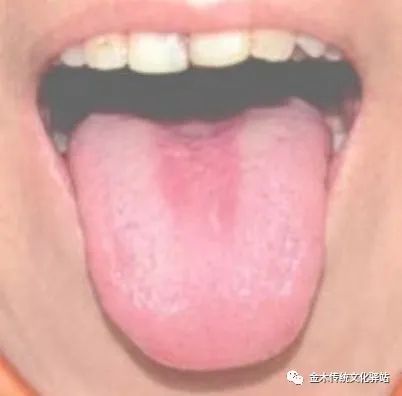
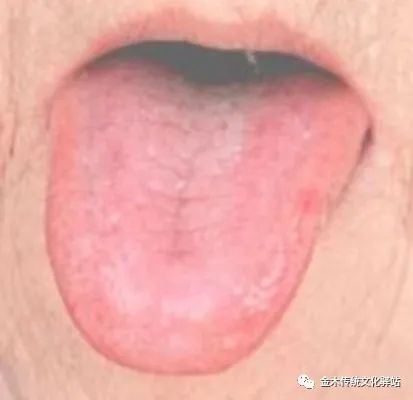
Characteristics: The coating is completely or partially desquamated, with a smooth tongue surface where the coating has fallen off, referred to as desquamated coating.
Clinical Significance: Indicates deficiency of stomach qi, dryness of stomach yin, or deficiency of both qi and blood, and is also a sign of overall weakness.
9. White Mould Coating
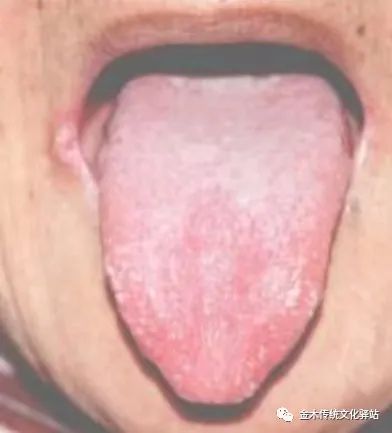
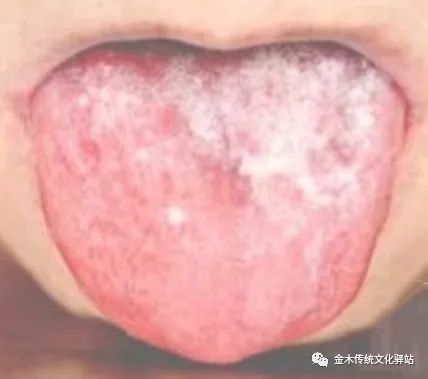
Characteristics: The tongue has mucous spots resembling rice grains, or the entire tongue is covered with mucous spots resembling curd, which may extend to the underside of the tongue or other areas of the mouth, easily wiped off but quickly reappearing, with a bright red tongue surface, referred to as white mould coating or mouldy coating.
Clinical Significance: Commonly seen in patients with deficiency of both qi and yin, where the righteous qi is unable to overcome the pathogenic factors, and damp-heat and turbid pathogens are rampant.
10. Purulent Coating


Characteristics: A thick layer of coating resembling pus on the tongue is referred to as purulent coating.
Clinical Significance: Indicates upward spreading of heat toxin and decline of stomach qi.
11. Thin Coating
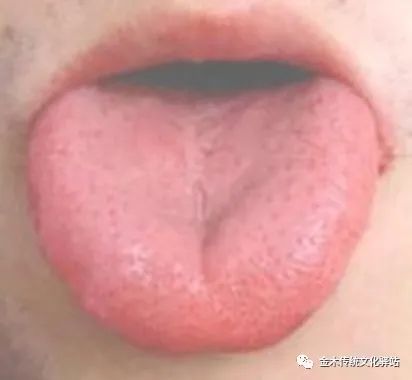
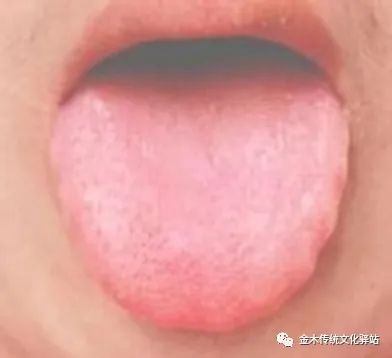
Characteristics: The tongue coating is thin enough to see the tongue body through it, also known as “visible base coating”.
Clinical Significance: The tongue coating is formed by the stomach qi and stomach yin rising to the tongue surface; a thin coating indicates that the stomach has generating qi, or that the disease is in its early stage, indicating a mild condition that has not harmed the stomach qi.
12. Thick Coating
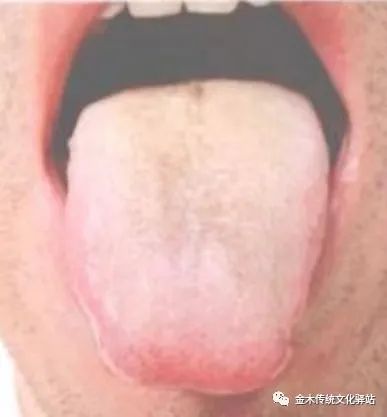
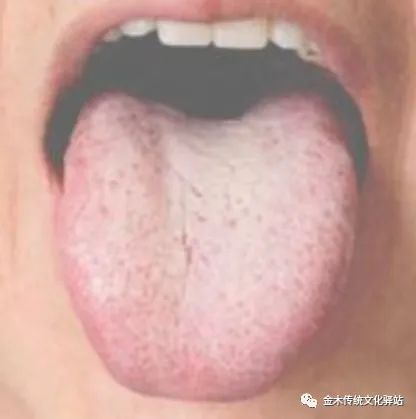
Characteristics: The tongue coating is thick enough that the tongue body cannot be seen through it, also known as “invisible base coating”.
Clinical Significance: Often caused by the stomach qi being accompanied by dampness and turbid pathogenic qi, indicating a strong pathogenic factor within; or internal phlegm-dampness, food accumulation, and other pathogenic factors.
The change of the coating from thin to thick indicates that the pathogenic factor is becoming stronger; conversely, the change from thick to thin, with the regrowth of thin coating on the tongue, indicates that the righteous qi is overcoming the pathogenic factor, a sign of recovery.
13. Moist Coating
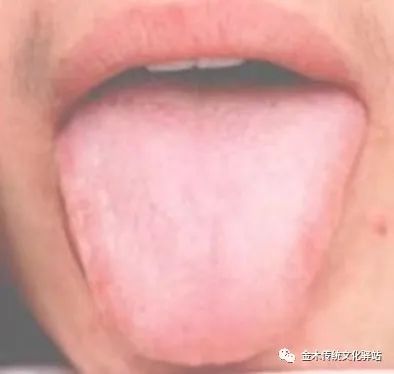
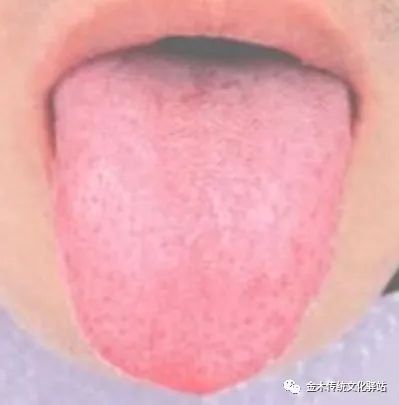
Characteristics: The tongue coating is moderately moist, neither slippery nor dry, referred to as moist coating.
Clinical Significance: This is one of the manifestations of a normal tongue; in the disease process, moist coating indicates that the body fluids have not been harmed.
14. Slippery Coating
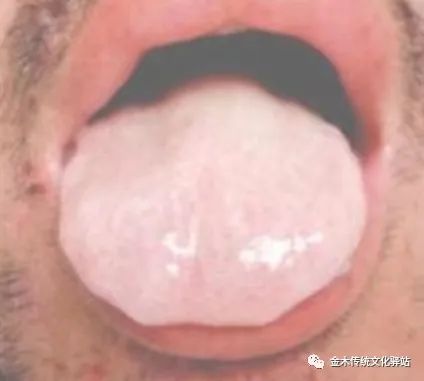
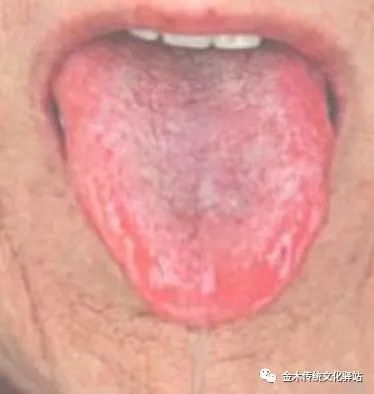
Characteristics: The tongue surface has excessive moisture, appearing as if it could drip, and feels slippery to the touch, referred to as slippery coating.
Clinical Significance: Indicates the accumulation of dampness within the body. Commonly seen in conditions of spleen yang deficiency, internal cold dampness, or phlegm retention in the lungs.
15. Dry Coating
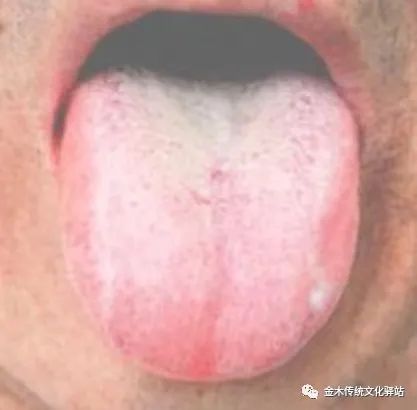
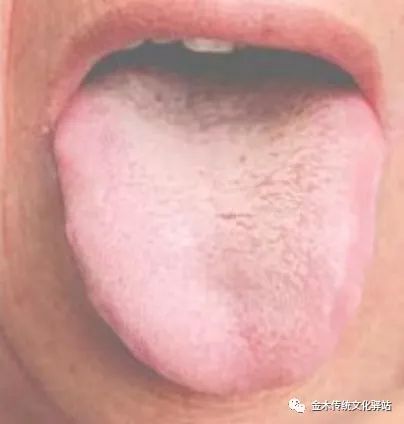
Characteristics: The tongue coating is dry, with no moisture, and may even crack, referred to as dry coating.
Clinical Significance: Indicates that the body fluids have been harmed, which may also be due to stagnation of yang qi, leading to loss of fluid distribution.
16. Rough Coating
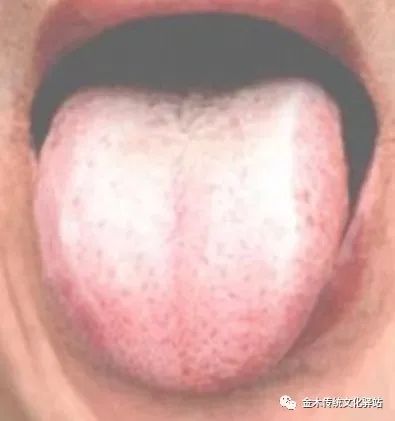
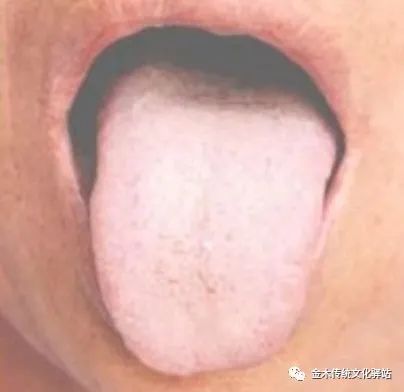
Characteristics: The coating is dry and rough, feeling coarse to the touch. Rough coating often develops from dry coating.
Clinical Significance: Commonly seen in severe conditions where heat has harmed the body fluids.
The change of the coating from moist to dry indicates severe heat harming the fluids, or loss of fluid distribution; conversely, the change from rough to moist indicates recovery from heat and restoration of fluids, or transformation of dampness into heat.
17. Greasy Coating
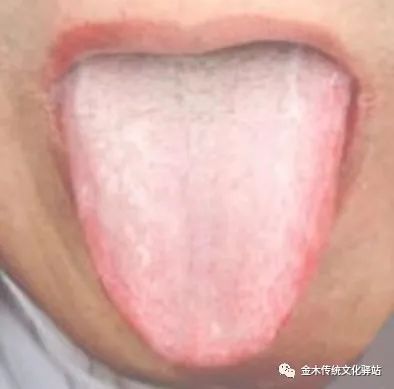
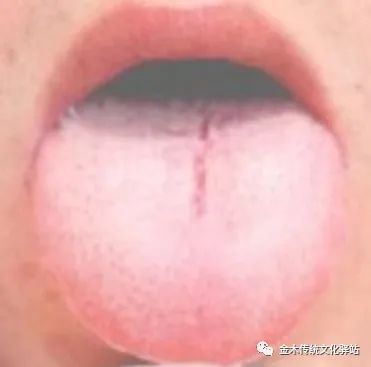
Characteristics: The coating is fine and dense, merging into patches, thick in the middle and thin at the edges, tightly adhering to the tongue surface, difficult to wipe off, referred to as greasy coating. Greasy coating is the most common tongue manifestation in clinical practice.
Clinical Significance: Indicates dampness, turbidity, and food accumulation.
18. Decayed Coating
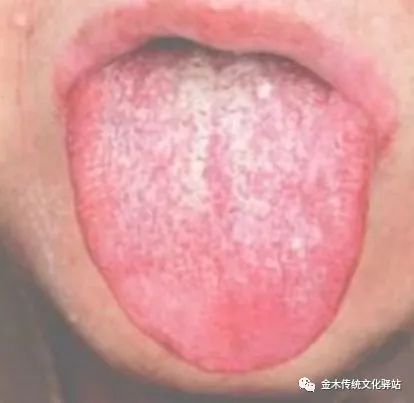
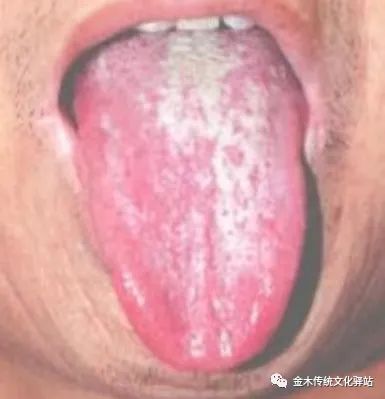
Characteristics: The coating has larger particles that feel loose at the base, resembling a pile of tofu dregs on the tongue surface, thick at the edges and middle, easily wiped off or falling off in patches, with a smooth tongue base, referred to as decayed coating, which is a rootless coating.
Clinical Significance: Indicates decline of stomach qi and upward spreading of dampness.
Decayed coating generally forms when pathogenic heat steams the turbid pathogens in the stomach, causing them to rise to the tongue, and due to prolonged illness, the stomach qi becomes insufficient to generate new coating, leading to the existing coating detaching from the tongue body and floating on the surface, thus forming a rootless coating.
19. Dry Greasy Coating
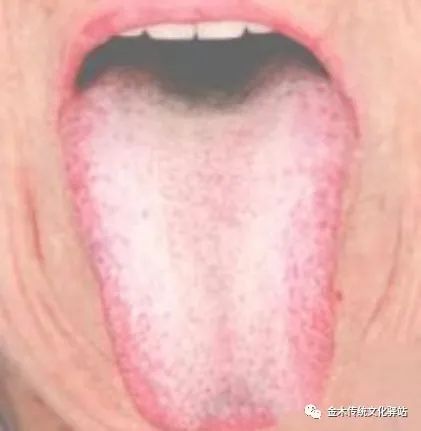
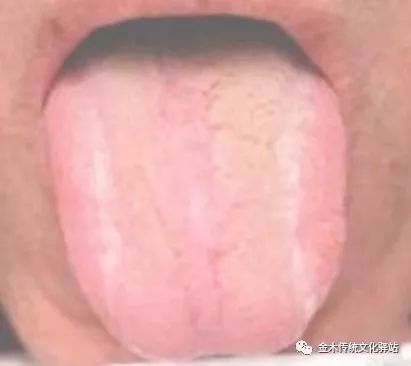
Characteristics: The coating is thick, greasy, and dry, referred to as dry greasy coating.
Clinical Significance: Commonly seen in conditions where pathogenic factors are accompanied by dampness, with heat arising from within.
20. Slippery Greasy Coating
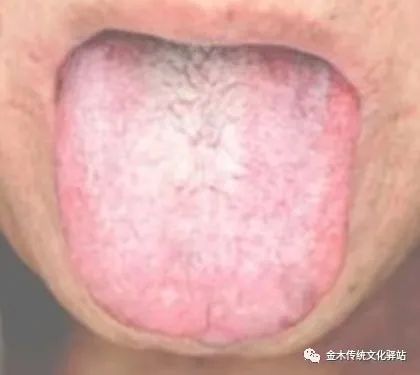
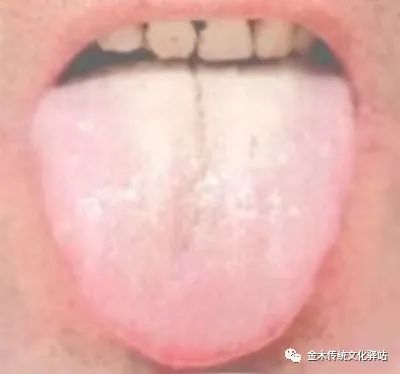
Characteristics: The coating is moist, slippery, and smooth, referred to as slippery greasy coating.
Clinical Significance: Indicates phlegm turbidity or internal cold dampness, with yang qi being obstructed.
21. Sticky Greasy Coating
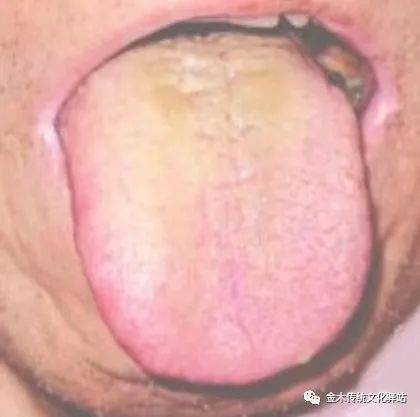
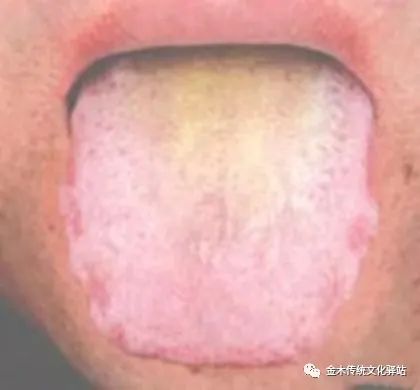
Characteristics: A layer of white or transparent thick sticky liquid covers the greasy coating, referred to as sticky greasy coating.
Clinical Significance: Commonly seen in conditions of spleen and stomach dampness and turbidity.
22. Dirty Greasy Coating

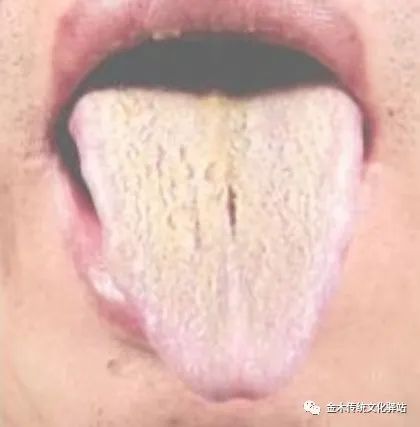
Characteristics: The tongue coating is greasy and dirty.
Clinical Significance: Often indicates damp-heat and turbid pathogens obstructing the stomach and intestines, rising to the tongue surface.

Disseminating TCM health knowledge, promoting Chinese traditional culture, sharing health concepts, and conveying care, passing health knowledge and traditional culture to more friends…
People are great because of their dreams; we are different because of our love.
Liu Qingning: 186 9643 6785 or (WeChat ID)
Yang Shunsong: 138 7171 7447 or (WeChat ID)


